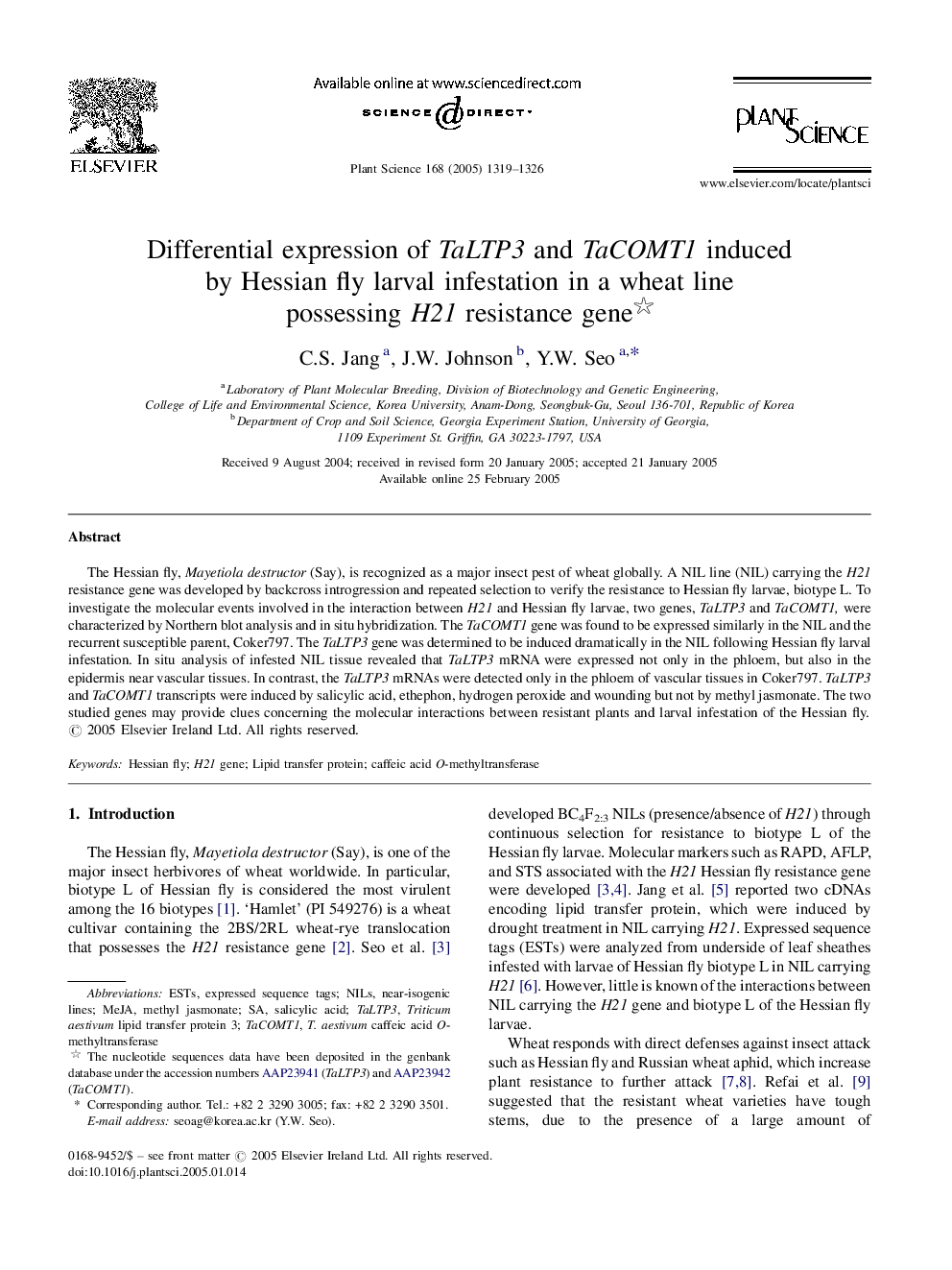| Article ID | Journal | Published Year | Pages | File Type |
|---|---|---|---|---|
| 10840886 | Plant Science | 2005 | 8 Pages |
Abstract
The Hessian fly, Mayetiola destructor (Say), is recognized as a major insect pest of wheat globally. A NIL line (NIL) carrying the H21 resistance gene was developed by backcross introgression and repeated selection to verify the resistance to Hessian fly larvae, biotype L. To investigate the molecular events involved in the interaction between H21 and Hessian fly larvae, two genes, TaLTP3 and TaCOMT1, were characterized by Northern blot analysis and in situ hybridization. The TaCOMT1 gene was found to be expressed similarly in the NIL and the recurrent susceptible parent, Coker797. The TaLTP3 gene was determined to be induced dramatically in the NIL following Hessian fly larval infestation. In situ analysis of infested NIL tissue revealed that TaLTP3 mRNA were expressed not only in the phloem, but also in the epidermis near vascular tissues. In contrast, the TaLTP3 mRNAs were detected only in the phloem of vascular tissues in Coker797. TaLTP3 and TaCOMT1 transcripts were induced by salicylic acid, ethephon, hydrogen peroxide and wounding but not by methyl jasmonate. The two studied genes may provide clues concerning the molecular interactions between resistant plants and larval infestation of the Hessian fly.
Keywords
Related Topics
Life Sciences
Agricultural and Biological Sciences
Plant Science
Authors
C.S. Jang, J.W. Johnson, Y.W. Seo,
